Sickle mower dry time?
Printed From: Unofficial Allis
Category: Allis Chalmers
Forum Name: Farm Equipment
Forum Description: everything about Allis-Chalmers farm equipment
URL: https://www.allischalmers.com/forum/forum_posts.asp?TID=183859
Printed Date: 17 Dec 2025 at 12:54pm
Software Version: Web Wiz Forums 11.10 - http://www.webwizforums.com
Topic: Sickle mower dry time?
Posted By: Hunt4Allis
Subject: Sickle mower dry time?
Date Posted: 12 Oct 2021 at 12:53pm
|
1.5' tall orchard grasses mostly type hay cut Monday with sickle mower. No conditioner, no tedder. Highs in 80's low humidity. I know I'll rake it one final time before bailing( 3 hrs before) but should I rake today, tomorrow and Thursday or just either today or Wednesday in addition to right before bailing? Being made into round bales stored outside, used in the next 2 months... Thanks Matt |
Replies:
Posted By: allisbred
Date Posted: 12 Oct 2021 at 1:48pm
| What are you using for a rake? I like to have hay laying flat, spread out about(with a Tedder). There are a few times through the year that I can get hay dry without tedding. I NEVER rake grass hay until dry enough to bale the same day. If you have a rotary rake, it can buy a few hours max of drying. Just my opinion as many have their own process. |
Posted By: Hunt4Allis
Date Posted: 12 Oct 2021 at 1:50pm
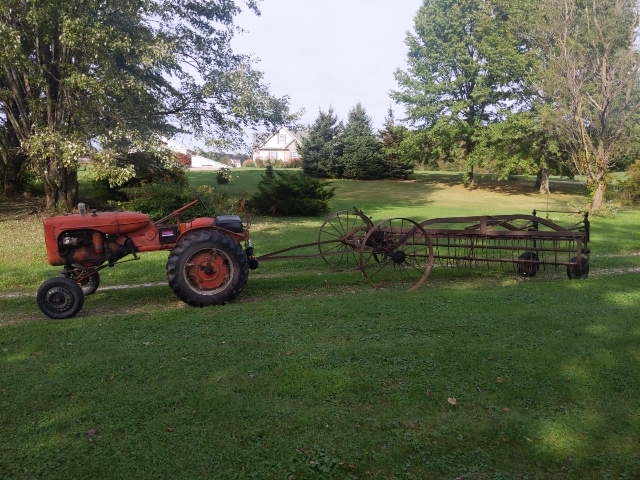 Old side delivery and model b |
Posted By: allisbred
Date Posted: 12 Oct 2021 at 1:54pm
| Will that Ted? |
Posted By: Tbone95
Date Posted: 12 Oct 2021 at 2:03pm
| I would let it dry very well on top, and be getting close to dry through. If you have good weather the day you're planning to bale, rake it a few hours before, then check it and bale. Should be good, .....how the heck do you have low humidity in OH with this weather going on??? |
Posted By: Ed (Ont)
Date Posted: 12 Oct 2021 at 5:55pm
| We used to let it dry 2-3 days. Then rake and bale. That was in July tho. Different deal in Oct. hard to dry anything this time of year. |
Posted By: AC720Man
Date Posted: 12 Oct 2021 at 10:18pm
|
We couldn’t bale that until Friday in VA and that’s if we got lucky. And that’s with tedding it twice. Heavy dews in the morning are lasting until noon. Every location is different, if you have low humidity and no dew in the morning this time a year, you are very fortunate. It needs to be turned over which in your case can only be done with your rake. If your weather conditions continue, getting it into a windrow Wednesday is feasible. Bump it a few times Thursday to make sure its drying. Twist the hay in your hands, if you don't squeeze any juice out of it you should be good. Make sure its not really green, if it is, its not dry. Hay Tedder is your best friend if a neighbor has one you can borrow. They make a world of difference especially this time of year. Bale it too early and you risk it molding or catching fire. ------------- 1968 B-208, 1976 720 (2 of them)Danco brush hog, single bottom plow,52" snow thrower, belly mower,rear tine tiller, rear blade, front blade, 57"sickle bar,1983 917 hydro, 1968 7hp sno-bee, 1968 190XTD |
Posted By: Gary Burnett
Date Posted: 13 Oct 2021 at 7:23am
|
Cutting it with a sickle bar means it lays more even on the ground not piled up like a haybind or disc mower.I'm still cutting hay with a NH 456 trailer mower and baling it the 2nd or 3 day no problem.Good thing is this time of year hay can be given an extra day or two to dry and it doesn't burn up like when its in the Summer when its in the mid 90's.Baled some fescue clover mix one year after Thanksgiving for a guy that was in a bind about his land use. |
Posted By: Hunt4Allis
Date Posted: 13 Oct 2021 at 8:58am
I'm not sure. I've read somewhere that flipping the handle a certain way that it would but I don't see how? |
Posted By: JLS retired
Date Posted: 13 Oct 2021 at 1:13pm
| roll bar rake that I saw reversed the direction of the bars so that instead of rolling opposite of the direction of travel to make a windrow it flipped the hay straight back. baled lots of hay in NE OHIO And humidity is more important than temp. Often helped by later in year grass is trying to go dormant and not as lush. |
Posted By: allisbred
Date Posted: 13 Oct 2021 at 6:15pm
| If there is a lever that goes to a gear box, I would be learning that pretty soon. I cut hay Monday night here in Gettysburg, heavy over cast all day Tuesday and Wednesday. I had the crimping rolls at full pressure, ran the tedder through twice so far. I can tell you that it takes everything when conditions are like this to bale dry hay and only hope that I get it Friday. Forecast is calling for rain Friday night and Saturday. What color is your hay today? Mine is a day behind and light green. |
Posted By: Hunt4Allis
Date Posted: 13 Oct 2021 at 8:40pm
There is a lever. I'll have to read up on them. I've read quite a bit on the dangers of bailing hay when too wet but all those are in reference to alfalfa hay which from what I read is a bit different than orchard grass. I understand mold is mold, but at this point I don't want to completely give up on it since it's going to rain Friday Saturday and Sunday here. They will probably only be about 5 4 ft by 5 ft round bales and if I have to I will unroll all of them before they can grow any mold on our fenced in pasture just so it doesn't go to waste and the cows get to eat it.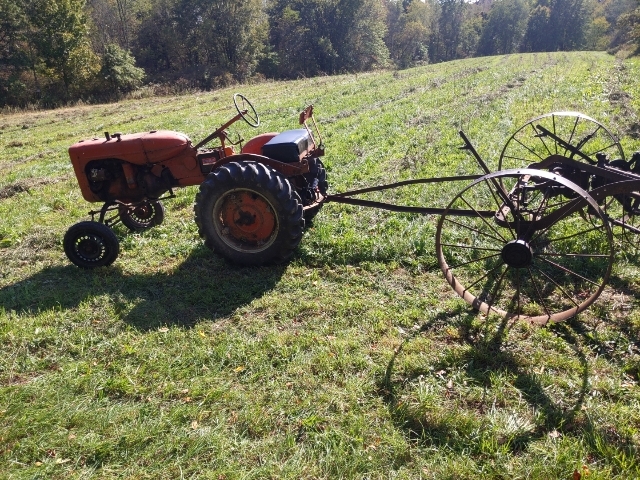 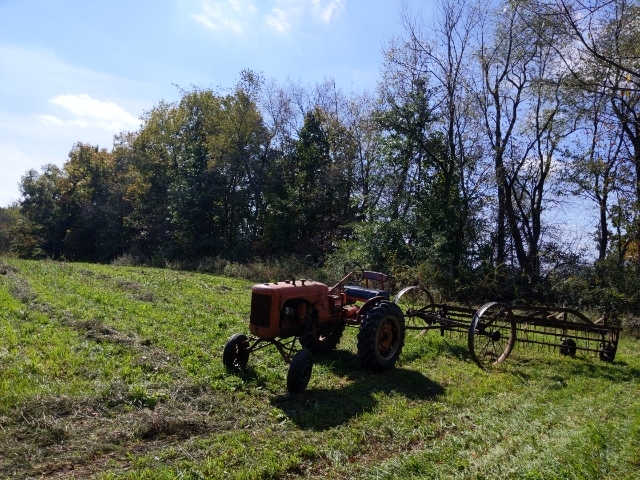 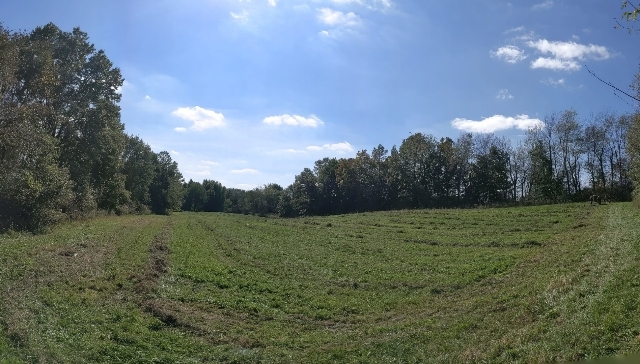 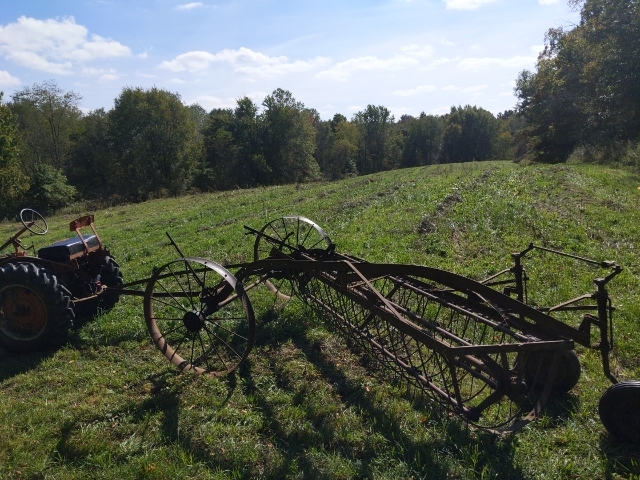 It's not perfect by any means but I have been working on replacing the gearbox in this sickle mower and many other components and this looks like the last opportunity to get it cut and share with my cows even if I have to unroll it immediately I will so it's not a complete waste of time and money! |
Posted By: allisbred
Date Posted: 13 Oct 2021 at 9:04pm
| You have another option to “wet wrap” the round bales before the rain. Very common around here for cattle feed. My opinion is to leave it flat and take the rain if not dry enough Friday to bale. We have round baled some pretty bad stuff over the years( one year a field took rain for a week and was in total 2 weeks before it had string on it), steers still ate that stuff. We have never wasted a bale of hay, even if totally brown. That will still beat a snow ball in the winter and better than mold. I always believed green partial cured hay is dangerous to feed as could cause bloating. Try the lever on your rake a little and see if that reverses. You might still get that up! Best of luck! |
Posted By: Hunt4Allis
Date Posted: 14 Oct 2021 at 4:48am
| I can understand bloat if released onto a new field of alfalfa or clover if they've never grazed before and it shocking their system but my cows are always grazing on pasture throughout the year. I will be looking at that lever more... Thanks |
Posted By: Dusty MI
Date Posted: 14 Oct 2021 at 7:45pm
|
Running a hay rake roll bar in reverse in called Tedding. ------------- 917 H, '48 G, '65 D-10 series III "Allis Express" |
Posted By: Hunt4Allis
Date Posted: 14 Oct 2021 at 8:36pm
I tried mine in the other position but it seems like it's either lost the ability to run in reverse or never did begin with. When I moved the lever to the other position other than neutral it feels really tight and it seems just the same as in neutral... 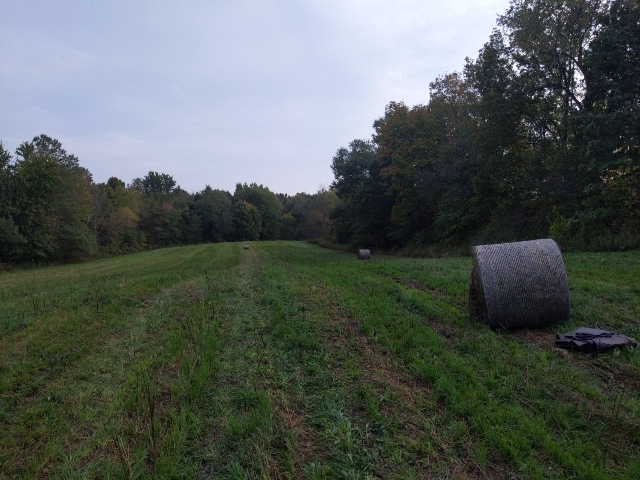 I did get it dry enough and in round bales before the storm comes! Thanks fellas for the info |
Posted By: dr p
Date Posted: 15 Oct 2021 at 5:56am
| There was a study published in hoard's dairyman a couple years ago that grass hay mowed with just a sickle mower (no conditioner) dries faster than grass hay that gets conditioned. Sounds counter intuitive to me but the breaking of the stem slows respiration. Not true for legumes |
Posted By: Lars(wi)
Date Posted: 15 Oct 2021 at 6:04am
|
Worked for a neighbor years, and years ago, who cut with a haybine, and had a jd 336 baler. He special ordered that baler with the extra wide pickup, and set the haybine windrow ‘in’ just a little bit so he never needed to rake. If the hay got rained on too much, it was chopped for haylage. ------------- I tried to follow the science, but it was not there. I then followed the money, and that’s where I found the science. |
Posted By: jaybmiller
Date Posted: 15 Oct 2021 at 6:12am
|
Ok, maybe a dumb question but..... after you 'flip and fluff' ( Tedding), do you need to gather the crop and make a nice windrow before you bale it ? ------------- 3 D-14s,A-C forklift, B-112 Kubota BX23S lil' TOOT( The Other Orange Tractor) Never burn your bridges, unless you can walk on water |
Posted By: Hunt4Allis
Date Posted: 15 Oct 2021 at 6:15am
| What is haylage? How do you make it and what do you do with it? |
Posted By: allisbred
Date Posted: 15 Oct 2021 at 11:14am
|
Posted By: Tbone95
Date Posted: 15 Oct 2021 at 11:21am
Traditionally, chopped and ensiled, in an upright or packed into a bunker. Now, tube wrapped wet round bales, though also referred to as "baleage". Your baler has to be (strongly recommended should be) a "silage special" in order to do this. Or even more confusing, chopped and blown into a bag. In any case, left alone to ferment for 45 days give or take, and fed to cows.
|
Posted By: Ray54
Date Posted: 15 Oct 2021 at 1:33pm
I can see some validity to this with big hallow stems but don't know about real fine stems. Just my option but most get way to concerned about keeping green color. Livestock out here goes 6 to 8 months with nothing but dry brown/gold colored food. Maybe that is a reason I like more mature grain in my oat and barley hay. The grain makes up part of the proteins lost in loosing the green color. But the different places things need to be done different applies for this. Because leaving oat hay lay at least 10 day is the rule of thump out here. But that time of year we expect another 5 months without rain.
 |
Posted By: Tbone95
Date Posted: 15 Oct 2021 at 1:53pm
Ray, yeah, different areas are surely different. Here in the MItten, you either cut oats before they head out, our tube wrap them or chop them, because they would take FOREVER to dry. And probably be rained on many times. I remember reading about a machine that put steam or mist or something on hay to INCREASE the moisture for baling. I'm like, WTF?!  
|
Posted By: allisbred
Date Posted: 15 Oct 2021 at 5:28pm
| Around here, green color, nutrients and a sweet smell are associated together. Rain, sun, dew pull color and nutrients. It’s kind of like a deck of cards doing hay, each time you need to work with what you have. The quicker you can get it dry and string around it, better odds of quality. Of course it helps to have a nice field to start with and low humidity! |
Posted By: allisbred
Date Posted: 15 Oct 2021 at 8:36pm
My neighbor cut fields of orchard grass sometime Monday with a Moco discbine with the flails off, Tedded 1 time late Thursday afternoon with a Basket Tedder, raked today with a basket rake and attempted to small square bale today using high moisture applicator. After stopping around 3:30, he came over and asked how I could be baling with no preserver? He saw me using a roll bar rake and noted that in the conversation. I then stuck several bales on my wagon checking moisture, range was 14.5-16.0. He then thought my tester was not reading correctly so I stuck several bales they had made— readings were over 21% and several checks were over my checker at 24%. I mowed the field of orchard grass Monday night using an old 492 haybine w/circle C crimping rolls set at full pressure, tedded the field each day (4 times) with a basket Tedder, raked today using a NH 256 roll bar rake at 2:00, started baling at 3:00. Weather conditions were the same, high humidity for 3 days, went up to the upper 70’s and might have made 80 today. I believe my field was a little thicker because of fertilizer and he cut last about a week behind me. His basket rake should have allowed a little more drying than the roll bar( I didn’t feel like using mine because I hate hooking the 3pt hitch up and I was short on time). I also mowed a little higher than the discbine. We both have NH balers except his was hooked to a 4020 JD and I was using a 185 AC. They still have 1/3 of the field on the ground . These are the results for today. We have talked back and forth several times about the best methods. I don’t buy into cutting and let lay to dry as best method because the grass laying under does not breath at the most critical time(within the first 12 hours). |
Posted By: Ray54
Date Posted: 17 Oct 2021 at 9:05pm
|
allisbred you have me convinced you know how to make hay in your area. But a question from dr p and the hoards story. It says using a sickle bar mower so just a thin layer of hay. Any mower/conditioner comb I can think of pulls hay into somewhat of a windrow. You think that makes a difference. Here I think it would. May of 2020 I had 20 acres of oats/barley mix. Cut with a 14 foot NH self propelled no crimper, put into a bale able windrow. At 14 days it was a bit questionable as to dryness. I cannot remember how many day it lay, but 3 or4 maybe a full21 days. It had a real good dew the morning of baling, what I always want for hay laying this long. Put up in 5x4 round bales. After sitting weeks more I weight 10 out of 60 at 960lbs. A good 33% of them (tobacoed) heated a bit cows loved it. If things would of been different I would put them in 16x23 3 wire bales that go over 100lbs every time. I have wondered how much more they would of heated in smaller denser packages. Round bales are few and far between in my area. The guy with baler only has 300 or 400 acres behind him 5 or 6 years. So this year he baled me 50 and to experiment I let him do 20 when I would of never tried small square baling. They turned into chaff. But hungry cows will eat it or be hunger tomorrow. Always new thing to learn. Sorry for high jacking your thread Hunt4allis.
|
Posted By: Hunt4Allis
Date Posted: 18 Oct 2021 at 5:09am
| Fed one to our cows and there hammering it |
Posted By: Tbone95
Date Posted: 18 Oct 2021 at 6:32am
|
I'm confused....I thought you didn't have a tedder??? Tedding versus letting lay, ya, no question. Leaving lay versus rolling up with a rolling rake????????mmmm.....
*edit* oh...wrong guy. Sorry
 |
Posted By: Hunt4Allis
Date Posted: 18 Oct 2021 at 6:51am
| Now I'm confused 🙄 |
Posted By: Tbone95
Date Posted: 18 Oct 2021 at 7:02am
Ah, don't be confused. You got your hay baled, and your cows love it. That's all that matters. And what worked this year, might not work next year anyway!
|
Posted By: Hunt4Allis
Date Posted: 18 Oct 2021 at 7:18am
| Yup, thanks for the input fellas! |
 allisbred wrote:
allisbred wrote: